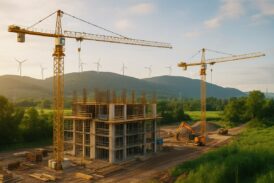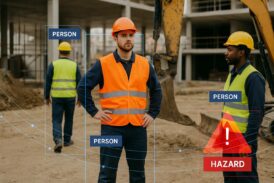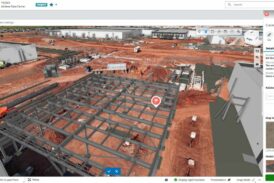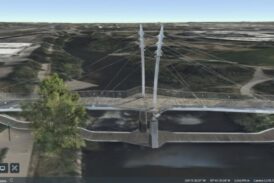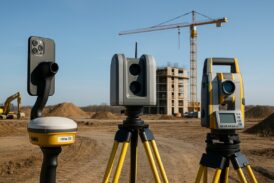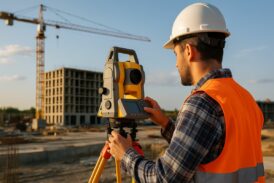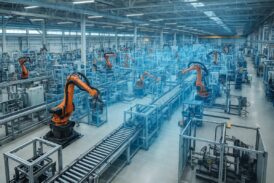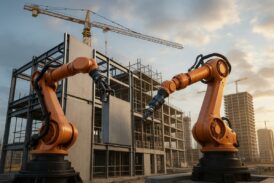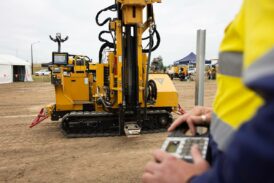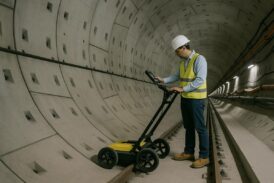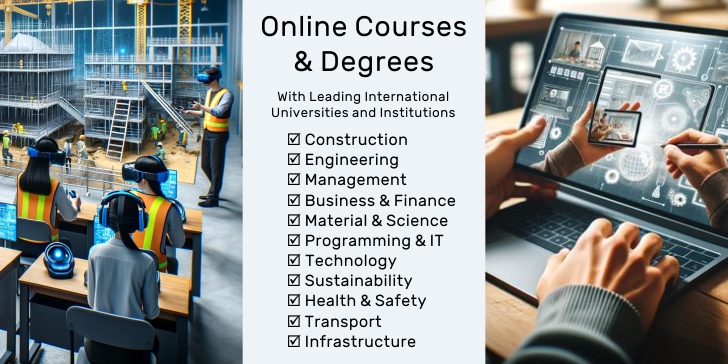
Construction Innovation Month
November marks Construction Innovation Month at Highways.Today, a celebration of the breakthroughs, bold ideas, and visionary technologies reshaping how the world builds. This is where the industry’s most forward-thinking minds meet the latest advances in science, engineering, and digital creativity to redefine what’s possible across infrastructure, highways, and the built environment.
This month, we’re looking beyond today’s tools to the ideas shaping tomorrow, from self-healing concrete and AI-driven design to 3D-printed structures and autonomous construction systems. Innovation isn’t just happening in laboratories or design studios; it’s taking shape on real projects that are smarter, cleaner, and more efficient than ever before. Highways.Today will spotlight the scientists, engineers, and innovators who are building that future today.
Visitors can explore a growing collection of features, resources, and expert insights showcasing the transformative research and technologies redefining how we plan, design, and deliver the next generation of construction.

Top Trends in Construction Innovation
Construction is entering one of the most transformative periods in its history. As research, data science, and digital technology converge, the pace of innovation is accelerating from laboratories to live worksites. The trends shaping this evolution reach far beyond software and machinery, they touch materials science, automation, and even the biology-inspired designs of the future.
Here are the key developments redefining how infrastructure is imagined, engineered, and built around the world.




1. AI and Predictive Intelligence
Artificial Intelligence is no longer an emerging technology, it’s becoming the core of how projects are planned, monitored, and optimised.
From generative design to automated risk detection, AI is helping engineers simulate outcomes before breaking ground, reduce waste, and boost safety.
Machine learning models are now being trained on decades of construction data, giving teams predictive power that was once unimaginable.
2. Robotics and Autonomous Equipment
Robotics and autonomous systems are changing what’s possible onsite.
From self-driving dump trucks in mining to robotic rebar tiers on bridges, machines are taking on repetitive, dangerous, and precision-driven tasks with unmatched consistency.
This shift not only improves safety but also addresses labour shortages by enabling 24/7 productivity through intelligent automation.
3. Advanced and Sustainable Materials
Material science is at the heart of true innovation. Researchers are developing self-healing concrete, carbon-negative cement, and 3D-printable composites that drastically cut emissions and extend asset lifespans.
Biogenic and recycled materials are also gaining traction, proving that sustainability can be both practical and profitable.
The future of construction will be built from substances that heal, adapt, and endure.
4. Digital Twins and Connected Data Ecosystems
Digital twins are maturing beyond visualisation tools to become intelligent decision platforms.
They integrate real-time data from IoT sensors, drones, and environmental monitors, allowing stakeholders to manage infrastructure dynamically throughout its lifecycle.
These connected ecosystems are bridging design and operation, providing a new model for resilience, sustainability, and cost control.
5. Modular and Offsite Manufacturing
Industrialised construction is taking shape as one of the sector’s most efficient methodologies.
Prefabricated and modular building systems reduce waste, compress timelines, and deliver precision-engineered quality.
With digital design, automated fabrication, and streamlined logistics, construction is evolving into a manufacturing-led discipline, building smarter, not just faster.
6. The Science of Resilient Infrastructure
Resilience is becoming a defining principle of modern infrastructure.
Engineers and researchers are using climate modelling, geospatial analysis, and AI simulation to design systems that can withstand floods, heatwaves, and seismic shifts.
The integration of advanced hydrological tools, such as Bentley’s OpenFlows StormCAD, demonstrates how innovation in modelling translates directly into safer, more sustainable communities.
“The most exciting innovations in construction aren’t about technology for its own sake, they’re about using technology to build a safer, cleaner, and more resilient world.”
These trends reveal a future where construction is informed by data, inspired by science, and driven by creativity. The companies leading these innovations are already proving that the boundaries of the industry are meant to be pushed, and redefined.

The Evolution of Construction Innovation
Every innovation builds on the legacy of those that came before. The story of modern construction is one of constant reinvention, where each decade brings new materials, methods, and technologies that redefine how we shape the world.
This timeline celebrates the milestones that have led us from the drawing board to the digital age, a journey that continues to accelerate as research, data, and design converge.

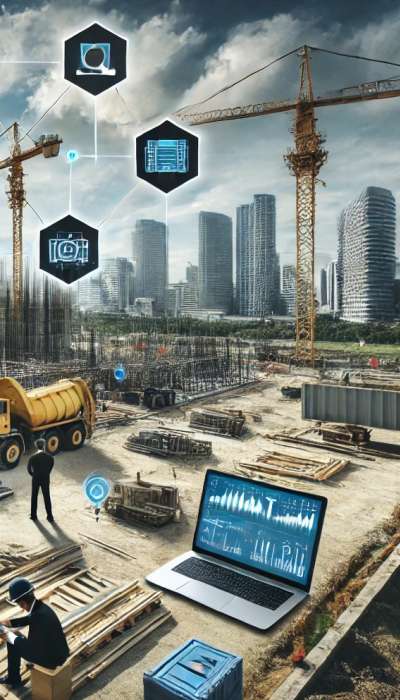
Innovation Milestones
1950s–1970s | The Mechanical Age
Automation first took hold with heavy machinery, prefabrication, and the standardisation of building components. The groundwork was laid for the industrialisation of construction.
1980s | The Digital Awakening
The introduction of CAD (Computer-Aided Design) transformed how projects were conceived and visualised, paving the way for digital workflows and 3D modelling.
1990s | The Era of Global Collaboration
Advances in telecommunications and early project management software allowed teams across continents to collaborate on megaprojects in real time.
2000s | The BIM Revolution
Building Information Modelling (BIM) unified design, data, and construction in one digital environment — setting the foundation for integrated, data-driven delivery.
2010s | The Rise of Automation and AI
Robotics, drones, and predictive analytics began reshaping how construction sites operated, improving safety and efficiency while reducing waste.
2020s | The Connected Future
Today’s innovations are defined by connectivity — digital twins, smart materials, IoT integration, and sustainable design working together to create intelligent, adaptive infrastructure.
2030 and Beyond | The Intelligent Era
Emerging frontiers include self-healing materials, fully autonomous job sites, and data ecosystems powered by AI that predict and optimise every phase of construction.
The future is no longer theoretical — it’s being built, tested, and refined right now.
The story of construction innovation is still being written. Every leap forward, from mechanical breakthroughs to digital transformation, has redefined what the industry can achieve. Yet, the greatest progress lies ahead. .
As artificial intelligence, advanced materials, and connected systems continue to evolve, the boundaries between imagination and reality grow ever thinner. The future of construction will belong to those who dare to innovate, collaborate, and think beyond convention.

Global Map of Innovation
Innovation in construction isn’t confined to one country or one company, it’s a worldwide effort driven by collaboration across continents.
From research universities to technology powerhouses, these global hubs are pioneering new approaches that blend science, sustainability, and engineering excellence.




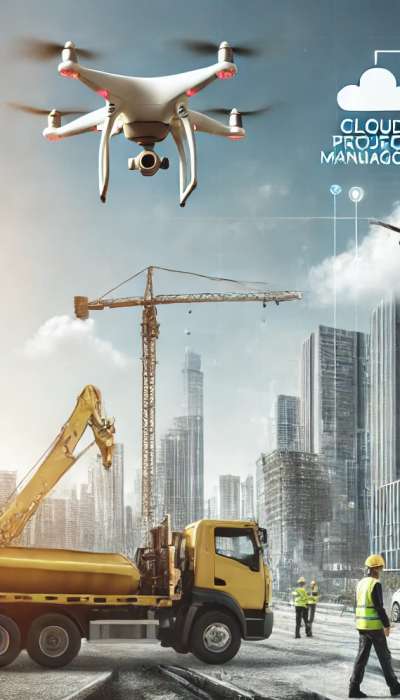
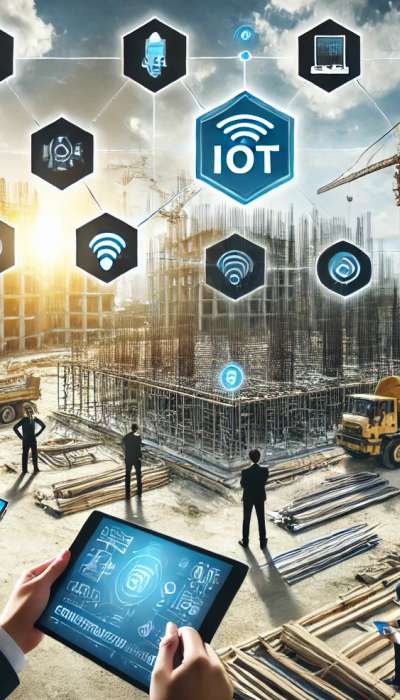
Innovation Hotspots
Zurich, Switzerland
At the forefront of European construction research, ETH Zurich’s Institute of Technology in Architecture is setting global standards in robotics, computational design, and advanced material science. The university’s Robotic Fabrication Laboratory and Digital Building Technologies Group have made Zurich a powerhouse of experimentation, where science and creativity meet in structural prototypes, automated assembly systems, and carbon-efficient construction methods. The city’s blend of academic precision and industrial collaboration continues to influence architectural and engineering innovation across the world.
Boston, USA
Home to MIT Open Learning and connected through academic and industrial ties to Stanford University’s CIFE in California, Boston anchors North America’s innovation corridor. These institutions are pioneering research in artificial intelligence, automation, and digital construction management — reshaping how infrastructure projects are designed, simulated, and maintained. The region’s mix of venture investment, R&D, and open-access education is nurturing a new generation of engineers who see technology and sustainability as inseparable.
Munich, Germany
Munich stands as Europe’s undisputed technology capital for construction innovation. It hosts both BIM World Munich and bauma, two of the world’s most influential gatherings for digitalisation and heavy machinery. Here, startups and global brands alike unveil advances in IoT integration, smart equipment, and virtual design tools. Supported by Germany’s strong engineering heritage, Munich is driving Europe’s transition from traditional construction to data-centric, automated, and sustainable infrastructure systems.
Riyadh, Saudi Arabia
The Kingdom’s capital is fast becoming a centre for sustainable infrastructure and mobility innovation, exemplified by the GEM Tech Forum and the ambitious Saudi Vision 2030 programme. Riyadh’s innovation agenda combines clean technology, advanced logistics, and smart city development with a commitment to renewable energy and circular design. Its rapid transformation is positioning the Middle East as a global testbed for future-ready urban infrastructure.
Dubai, United Arab Emirates
A global pioneer in smart cities and modular construction, Dubai continues to redefine urban innovation through landmark initiatives like the Dubai 2040 Urban Master Plan. From 3D-printed buildings to AI-driven energy systems, the emirate has built a reputation for turning ambitious ideas into reality. With its open regulatory environment and focus on sustainable growth, Dubai serves as a living laboratory for smart construction and green urban planning.
London, United Kingdom
As the beating heart of engineering and architectural innovation, London connects centuries of civil engineering excellence with modern-day digital transformation. The Institution of Civil Engineers (ICE) and events like Digital Construction Week foster dialogue between policymakers, researchers, and technology pioneers. The city’s innovation ecosystem bridges academia, design, and construction, setting benchmarks for safety, sustainability, and data-driven decision-making across Europe and beyond.
Singapore
Singapore’s strategic focus on smart infrastructure and autonomous urban systems has made it Asia’s innovation hub for construction technology. Government-backed initiatives like the Smart Nation Programme and Building and Construction Authority’s (BCA) Integrated Digital Delivery strategy are driving digital adoption across every stage of the construction lifecycle. With its compact size and strong governance, Singapore offers a model for how nations can integrate AI, IoT, and sustainability into cohesive, city-wide ecosystems.
Tokyo, Japan
Tokyo remains a global leader in automation and robotics integration, fusing precision engineering with advanced manufacturing techniques. Japanese firms are pioneering autonomous construction machinery, drone surveying, and AI-driven safety systems, often inspired by the nation’s culture of meticulous craftsmanship. Tokyo’s construction sites are laboratories of efficiency, where innovation is embedded into the rhythm of everyday operations.
Nairobi, Kenya
A rising hub of sustainable and climate-resilient infrastructure, Nairobi is leading a new wave of innovation in Africa. Through regional collaborations and international partnerships, Kenya is advancing green building practices, renewable energy integration, and locally sourced material research. Innovation here is not just about technology, it’s about creating adaptable, affordable, and inclusive solutions that address real environmental and social needs.
Melbourne, Australia
Melbourne champions sustainable construction, modular housing, and circular economy design across the Asia-Pacific region. The city’s universities and start-ups are collaborating on low-carbon building materials, smart waste management, and climate-resilient urban infrastructure. Australia’s strong focus on sustainability and resource efficiency is turning Melbourne into a beacon of innovation for construction methods suited to extreme climates and growing populations
Innovation knows no borders. From Europe’s research labs to Asia’s smart cities and Africa’s sustainable building hubs, every region contributes its own vision to the evolving story of construction.
These global connections form a network of shared progress, where collaboration, science, and creativity combine to solve the challenges of a changing world. Together, they prove that innovation isn’t confined to place or scale; it’s a universal language shaping the future of how we build.

Leading Companies Driving Innovation
True innovation rarely comes from the comfort zone. It emerges from visionaries who challenge convention, invest in research, and develop the technologies that shape the next era of construction.
These companies are redefining the possibilities of design, engineering, and infrastructure through relentless creativity, digital integration, and sustainable ambition.
This month, Highways.Today recognises a select group of industry leaders who continue to push the boundaries of what’s achievable in construction innovation.

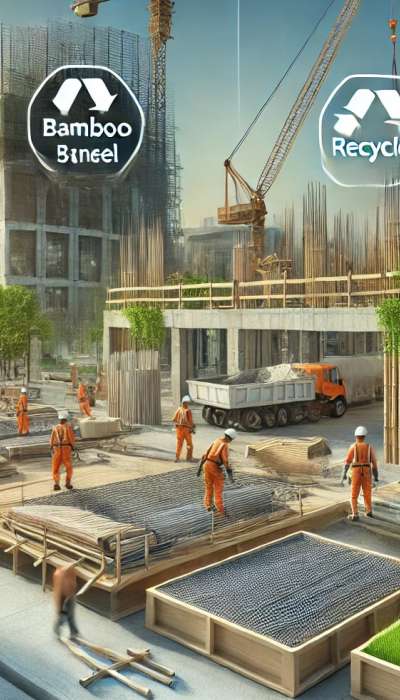
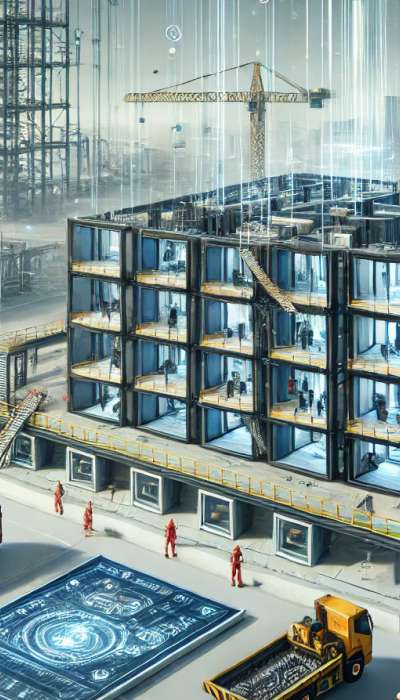
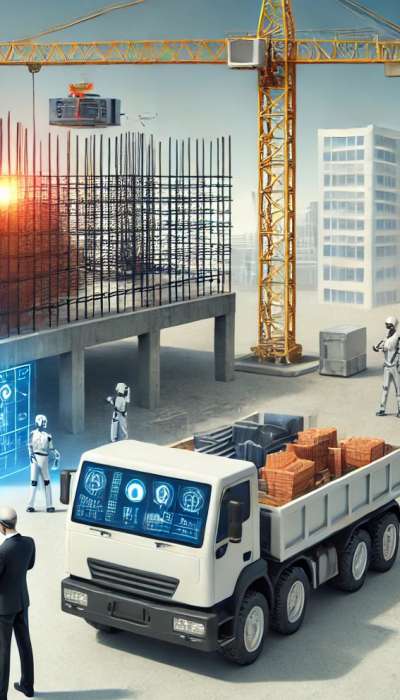

Bentley Systems
Bentley Systems has become synonymous with digital transformation across infrastructure.
Through platforms like OpenRoads Designer, SYNCHRO, and iTwin, Bentley empowers engineers to integrate design, simulation, and operations within one connected ecosystem. Their tools are driving the evolution of digital twins and predictive modelling, ensuring data remains the backbone of every modern infrastructure project.
“Bentley isn’t just digitising construction — it’s redefining how the world’s infrastructure lives, evolves, and performs.”
Trimble
Trimble continues to lead the integration of positioning technology, automation, and data connectivity across construction.
From advanced machine control and site positioning to the Trimble Construction Cloud, the company’s innovations enhance accuracy, efficiency, and collaboration on a global scale. Trimble’s deep commitment to interoperability and open data is transforming the way stakeholders plan, build, and maintain assets.
“Trimble’s precision-driven technologies are building the bridge between vision and execution.”
Liebherr
As one of the world’s most respected names in heavy equipment, Liebherr is also a quiet powerhouse in digitalisation and connectivity. With its Liebherr Connect platform, the company is helping contractors and operators unlock real-time insights from their fleets, enabling smarter maintenance and energy efficiency. Liebherr’s integration of IoT and advanced telemetry marks a major step toward fully connected machinery ecosystems.
“Liebherr’s machines are no longer just built to work — they’re built to think.”
CDE Group
CDE is reshaping the industry’s approach to waste, materials, and water through its pioneering circular economy solutions. By combining process engineering with digital monitoring, CDE’s wash plants and materials recovery systems are proving that sustainability and profitability can coexist. Their global CIRCLE Symposium continues to lead the conversation on sustainable construction practices and resource efficiency.
“CDE is closing the loop, turning waste into opportunity, and innovation into impact.”
AtkinsRéalis
AtkinsRéalis is redefining how large-scale engineering and design harness innovation. Through initiatives like #HackaFuture, the company is championing creative recruitment and cross-disciplinary collaboration, bridging gaming, robotics, and clean energy technology.
“Innovation begins when bold ideas meet the courage to build differently.”
Septentrio
A leader in high-precision GNSS technology, Septentrio is powering the next generation of automation, robotics, and positioning applications. Its mosaic modules provide sub-centimetre accuracy for autonomous vehicles and construction equipment, supporting everything from site automation to intelligent timing. In an industry where precision matters, Septentrio is the quiet force ensuring innovation stays on track.
“Septentrio’s precision technologies are laying the foundation for truly autonomous construction.”
Basalt Cyber
In an era where digital transformation drives every aspect of construction, Basalt Cyber ensures that progress is protected. The company specialises in cybersecurity solutions for critical infrastructure, helping construction firms, technology providers, and engineering teams safeguard their data, operations, and digital assets.
From network protection and risk management to secure data architecture, Basalt Cyber provides the resilience needed for innovation to thrive safely. Their expertise ensures that as the industry embraces automation, IoT, and digital twins, security remains a cornerstone rather than an afterthought.
“In construction’s connected future, cybersecurity isn’t optional — it’s foundational.”
These companies aren’t simply adapting to change, they’re driving it. Their technologies form the backbone of the global innovation ecosystem that underpins smart infrastructure, sustainable design, and the digital construction revolution.
Together, they represent the engineering ingenuity shaping the next generation of the built world.

Leading Resources for Construction Innovation
Innovation doesn’t happen in isolation. Behind every breakthrough lies a network of institutions, research bodies, and associations that invest in science, promote collaboration, and shape the policies guiding the construction industry into the future.
These organisations serve as the backbone of progress, connecting academia, technology, and industry to accelerate digital transformation and sustainable development across the built environment.




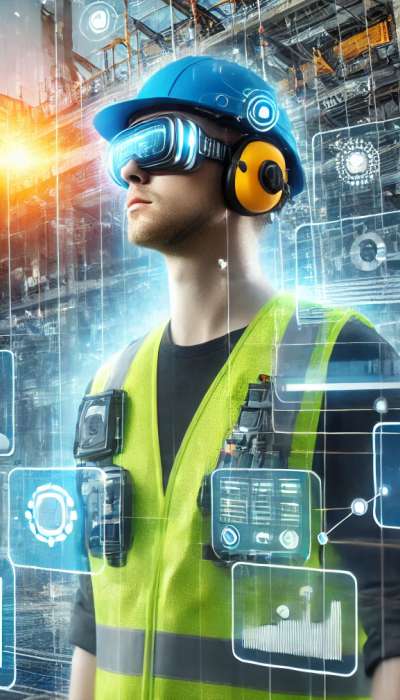
Highways.Today
At the heart of this network, Highways.Today continues to be the global voice of innovation for infrastructure professionals.
By reporting on technological advances, research breakthroughs, and emerging policy frameworks, this publication connects readers directly with the people and organisations reshaping how the world builds.
“Highways.Today isn’t just reporting on innovation, it’s part of the ecosystem making it happen.”
World Economic Forum (WEF) – Centre for Urban Transformation
The WEF’s Centre for Urban Transformation unites public and private sectors to develop sustainable, resilient cities through technology and policy innovation.
Its Future of Construction initiative provides one of the most comprehensive roadmaps for digitalisation and sustainability across global infrastructure.
CIB – International Council for Research and Innovation in Building and Construction
The CIB connects universities, research institutes, and professionals worldwide to promote innovation and knowledge sharing in construction science.
Its working commissions publish cutting-edge research on smart materials, digital tools, and sustainable construction methods that influence industry standards.
BRE Group – Building Research Establishment
The BRE remains one of the world’s foremost authorities on building science, sustainability, and certification. From BREEAM to new digital research initiatives, BRE’s work ensures innovation is backed by evidence, measurement, and global standards that drive lasting change.
Construction Industry Institute (CII)
Based at the University of Texas, CII leads collaborative research between academia and industry to improve construction performance and technology adoption.
Its work on advanced project delivery, modularisation, and digital transformation continues to shape best practice worldwide.
European Construction Technology Platform (ECTP)
The ECTP drives innovation policy across Europe, aligning industry, academia, and government through Horizon Europe projects. It focuses on smart infrastructure, sustainable materials, and digital innovation, influencing the EU’s research agenda for construction and urban development.
NIBS – National Institute of Building Sciences
The NIBS, based in Washington D.C., fosters collaboration across architecture, engineering, and construction to improve the built environment through innovation and resilience. Its work on digital standards, building performance, and sustainability plays a key role in the global construction dialogue.
MIT Concrete Sustainability Hub
A collaboration between MIT and major industry partners, this research hub is pioneering material science and data analytics to improve concrete performance, durability, and carbon reduction. It represents how academic research directly fuels real-world innovation.
ISO – International Organization for Standardization
The ISO provides the global framework that turns innovation into practical reality. Through standards such as ISO 19650 for BIM and ISO 14001 for environmental management, it ensures emerging technologies and processes are implemented consistently and safely across borders. ISO’s technical committees for construction and sustainability drive continuous improvement and international collaboration, turning ideas into universal benchmarks.
World Green Building Council (WorldGBC)
The World Green Building Council is a global network driving the transformation towards net-zero and regenerative buildings. With members in over 70 countries, it connects companies, researchers, and policymakers to accelerate innovation in materials, design, and operations.
WorldGBC’s programmes influence policy and inspire collaboration across the built environment, making sustainability central to the innovation agenda.
These institutions form the intellectual and scientific backbone of the construction innovation movement. Their work ensures that new ideas are grounded in evidence, guided by standards, and driven by collaboration between research, industry, and policy.
Together with Highways.Today, they embody a global commitment to building a smarter, more sustainable, and resilient world.

Leading Events Driving Construction Innovation
Innovation thrives on collaboration, and nowhere is that more visible than at the world’s leading construction and technology events. Across continents, these gatherings bring together the brightest minds in engineering, research, and digital transformation. They are the forums where breakthroughs are unveiled, partnerships are forged, and the next generation of ideas comes to life.
Here are ten key events defining the global construction innovation calendar.


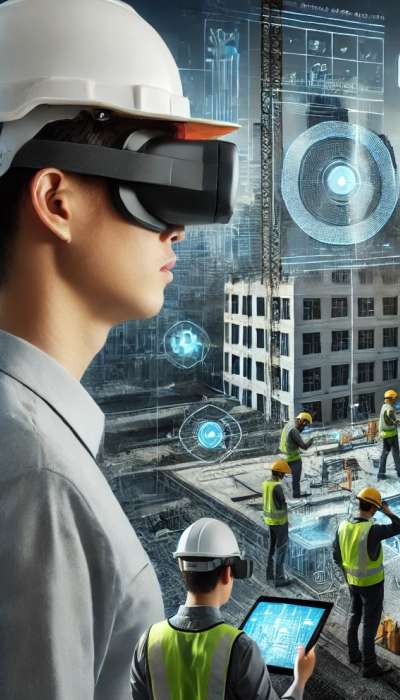

1. BIM World Munich – Germany
The leading European platform for digital construction, BIM World Munich showcases cutting-edge Building Information Modelling, digital twins, and sustainable design technologies. From data-driven infrastructure to smart cities, it’s where the digital future of the built environment becomes tangible.
2. The Year in Infrastructure Conference – Bentley Systems
Hosted by Bentley Systems, the Year in Infrastructure Conference recognises the most innovative infrastructure projects from around the world. Through the Going Digital Awards, it showcases real examples of design, simulation, and data integration pushing the limits of engineering excellence.
3. Trimble Dimensions+ – United States
Trimble’s flagship event unites thousands of professionals exploring the intersection of automation, connectivity, and precision technology. Dimensions+ highlights real-world applications of AI, machine control, and integrated project workflows — turning digital ambition into construction reality.
4. Digital Construction Week – United Kingdom
London’s Digital Construction Week is the UK’s premier event for innovation in the built environment. Covering everything from robotics and 3D printing to AI and data visualisation, it’s the go-to stage for tech-driven construction.
5. World of Concrete – United States
A cornerstone of innovation in materials and equipment, World of Concrete continues to set benchmarks in construction technology and sustainability. Its focus on advanced materials science, digital tools, and automation makes it essential for innovators in concrete and infrastructure.
6. GEM Tech Forum – Riyadh, Saudi Arabia
The GEM Tech Forum brings together leaders in mobility, infrastructure, and logistics to discuss the future of global transport innovation. From autonomous fleets to clean energy integration, it showcases technologies transforming movement, safety, and connectivity across regions.
7. ConExpo-Con/Agg – United States
As North America’s largest construction trade show, ConExpo-Con/Agg highlights equipment innovation and industrial transformation. With automation, electrification, and data analytics now centre stage, the show offers a look into how machinery and materials are evolving to meet future demands.
8. bauma – Germany
Held in Munich every three years, bauma remains the world’s largest construction exhibition. It’s the stage where manufacturers and technology companies unveil next-generation machinery, robotics, and digital systems that redefine the limits of heavy construction and mining.
9. Construction Technology Festival – Dubai, UAE
Hosted in one of the world’s most dynamic cities, the Construction Technology Festival showcases AI, robotics, and modular innovation transforming the Middle East’s megaprojects. It’s a vital meeting point for future-focused leaders shaping the smart cities of tomorrow.
10. Advanced Building Skins – Switzerland
This scientific and architectural conference explores innovations in façade engineering, energy performance, and materials science. With researchers, architects, and technologists sharing ground-breaking findings, Advanced Building Skins bridges research and real-world application.
These top ten events represent the beating heart of construction innovation, places where vision meets experimentation, and ideas evolve into transformative solutions.
From Munich to Dubai, each conference, expo, and symposium showcases the technologies that will define how we design, build, and maintain the infrastructure of the future.

Training and Education
Innovation isn’t only about technology, it’s also about people. As digitalisation, automation, and sustainability reshape the global construction industry, the demand for new skills has never been greater. The professionals leading the next generation of projects are no longer just builders and engineers, they’re data analysts, technologists, and innovators fluent in digital tools and scientific thinking.
This shift is redefining how the industry learns. From online training and microcredentials to postgraduate research and corporate reskilling, education is evolving into a dynamic ecosystem that keeps pace with technological change.

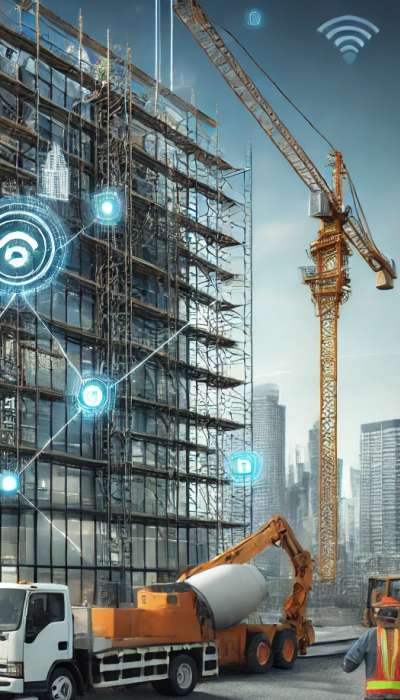


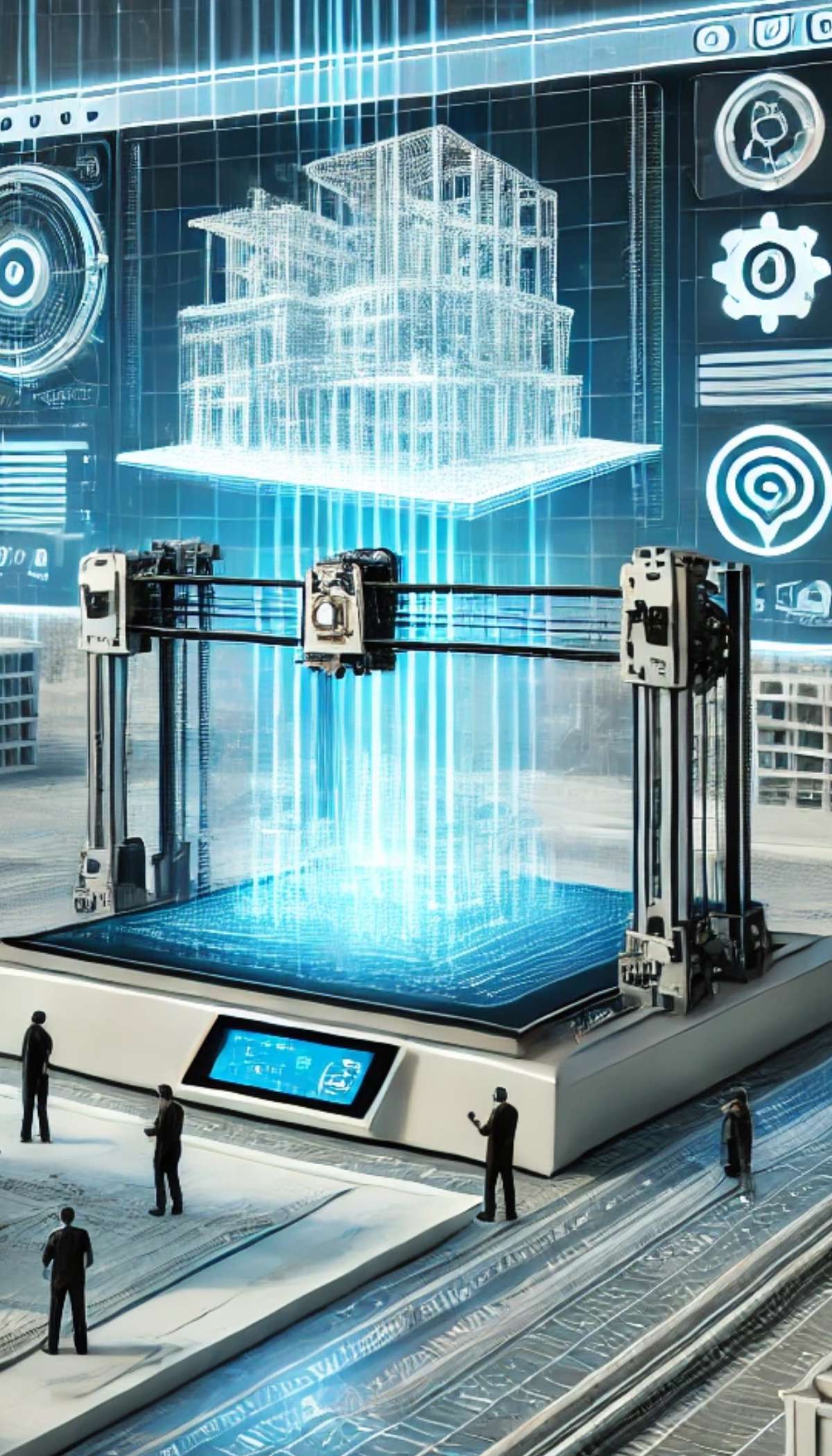
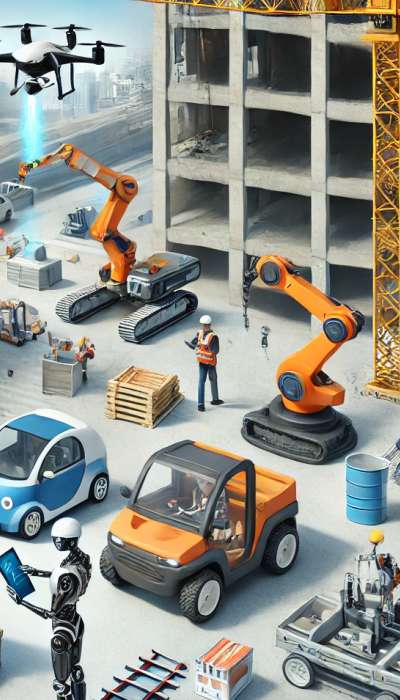

Highways.Today Courses and Degrees
Through Highways.Today’s global education initiative, professionals can access a growing selection of specialised courses, diplomas, and degree programmes tailored to the modern construction environment.
Delivered in partnership with international institutions, these programmes combine academic excellence with real-world industry relevance.
Current learning paths include:
- Digital Construction and BIM Management: mastering Building Information Modelling and data integration
- Sustainable Infrastructure Design: aligning construction practices with global sustainability goals
- AI and Automation in Construction: understanding machine learning and robotics in field applications
- Construction Project Management: advanced techniques for managing digital-first projects
MIT Open Learning
At the forefront of academic innovation, MIT Open Learning provides access to some of the most advanced education in engineering, data science, and sustainability.
Through its MicroMasters, OpenCourseWare, and MIT xPRO programmes, the institute brings cutting-edge research in artificial intelligence, robotics, and materials engineering directly to professionals around the world.
Its focus on open access and practical application bridges the gap between academic theory and real-world engineering practice. From machine learning for construction management to sustainable infrastructure design, MIT’s approach embodies the spirit of lifelong learning and global collaboration that defines today’s innovation-driven workforce.
ETH Zurich: Institute of Technology in Architecture (ITA)
Renowned as one of Europe’s leading centres for design and technology research, ETH Zurich’s ITA is pioneering the integration of robotics, computational design, and advanced materials into construction. The institute’s Robotic Fabrication Laboratory and Digital Building Technologies group have become global leaders in experimentation, from 3D-printed concrete structures to carbon-fibre reinforcement and autonomous assembly systems.
Through its research and postgraduate programmes, ETH Zurich is demonstrating how architecture and engineering are converging into a unified, data-driven discipline, one that prioritises sustainability, precision, and creativity in equal measure.
CIFE, Stanford University
The Center for Integrated Facility Engineering (CIFE) at Stanford University is recognised worldwide as a pioneer in digital construction research. Established in 1988, it laid much of the foundation for modern BIM and virtual design and construction (VDC) practices used across today’s infrastructure and building projects.
CIFE continues to drive innovation through interdisciplinary research that unites civil engineering, computer science, and management. Its collaborations with global industry leaders explore how AI, automation, and simulation technologies can optimise every stage of the construction lifecycle, from design and planning to operations and maintenance.
The Institution of Civil Engineers (ICE)
For over two centuries, the Institution of Civil Engineers (ICE) has been advancing the art and science of engineering. Today, it remains a cornerstone for professional development through its Continuing Professional Development (CPD) framework, online learning, and global accreditation.
ICE’s training programmes cover sustainability, resilience, project management, and digital transformation, equipping engineers with the tools to navigate the challenges of modern infrastructure delivery. Its commitment to ethics, innovation, and professional excellence continues to shape standards worldwide.
European Construction Technology Platform (ECTP)
The ECTP brings together more than 160 member organisations, including major construction firms, SMEs, research institutes, and universities, to drive innovation policy across Europe. As a key participant in the Horizon Europe framework, ECTP coordinates collaborative research in areas such as digital construction, low-carbon materials, and smart infrastructure systems.
Its Committees on Built Environment, Infrastructure, and Energy Transition foster cross-sector innovation, ensuring that European R&D remains globally competitive. Through conferences, research programmes, and strategic roadmaps, ECTP is helping to define the long-term vision for sustainable and digitally connected construction in Europe.
Emerging Education Trends
The future of training in construction innovation is increasingly:
- Digital and On-Demand: enabling self-paced, virtual, and AR/VR-enabled learning.
- Collaborative: connecting academia, research labs, and industry projects in real time.
- Sustainability-Focused: embedding environmental literacy into every discipline.
- Interdisciplinary: merging engineering, computer science, and design thinking into unified programmes.
- Data-Driven: using analytics to personalise learning and track professional growth.
These trends reflect the same transformation driving the industry itself, continuous improvement powered by technology and creativity.
Training is no longer a one-off phase; it’s a lifelong partnership between innovation and expertise. The construction leaders of tomorrow will be those who understand technology, value sustainability, and think beyond convention.
Through education, research, and collaboration, the global construction community is cultivating the talent that will turn today’s innovation into tomorrow’s infrastructure.

Building Tomorrow Today
As Construction Innovation Month draws to a close, one thing is clear, the pace of transformation in the construction industry has never been greater. From the laboratories developing next-generation materials to the job sites deploying AI and autonomous systems, innovation is rewriting the blueprint of how we design, build, and sustain our world.
This month has showcased the brilliance of the global construction community, its engineers, scientists, technologists, and thinkers, who dare to imagine new possibilities. Their breakthroughs aren’t just improving efficiency or performance; they’re reshaping entire systems to be smarter, cleaner, and more resilient. Every story shared on Highways.Today reflects the same vision: a future built on curiosity, collaboration, and courage.
“Innovation isn’t about predicting the future — it’s about creating it.”
Highways.Today will continue to spotlight the people and technologies leading this transformation, from sustainable design and advanced manufacturing to AI, robotics, and digital infrastructure. The journey toward a fully connected, intelligent construction ecosystem is only beginning, and every innovation takes us one step closer.
Stay connected, stay inspired, and keep building towards the future.
Follow Highways.Today on LinkedIn, X, Facebook, and Instagram for the latest features, research, and insights.










